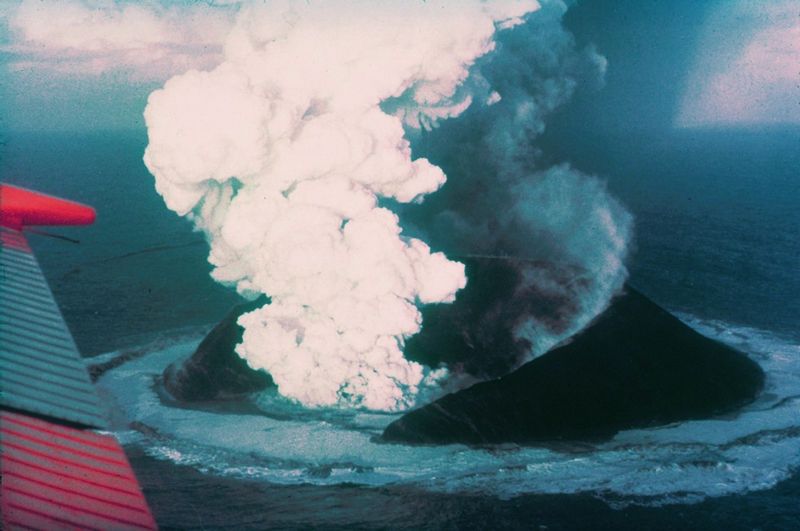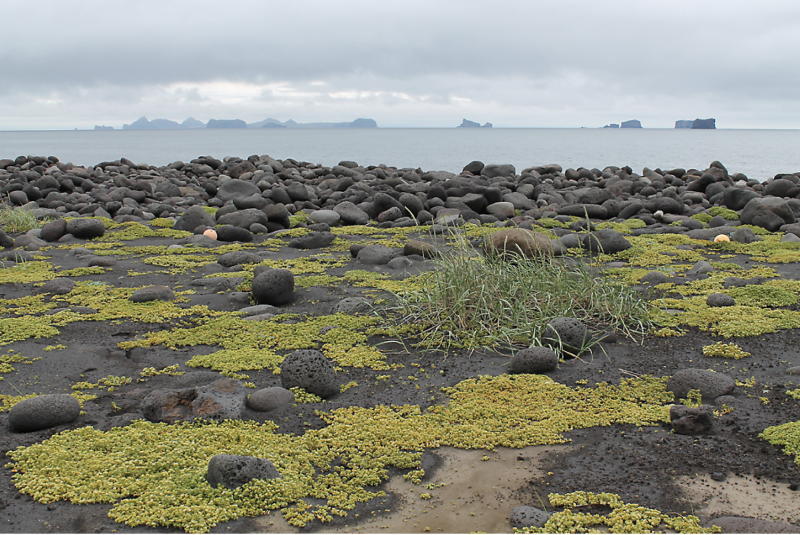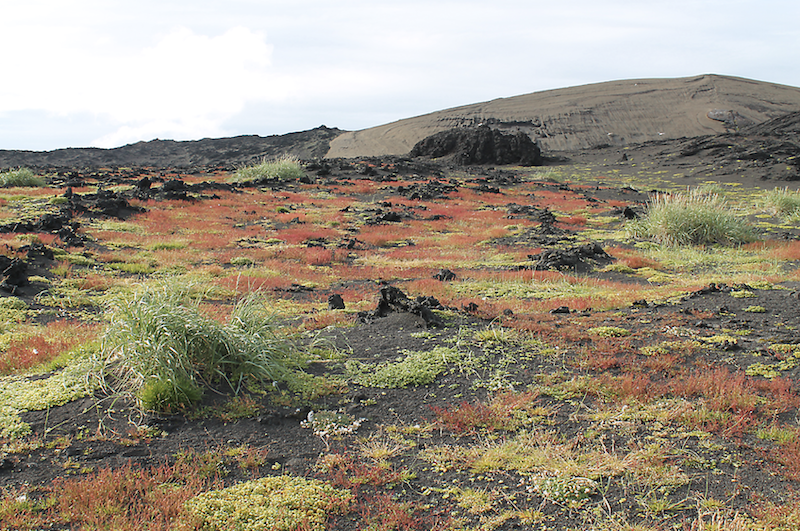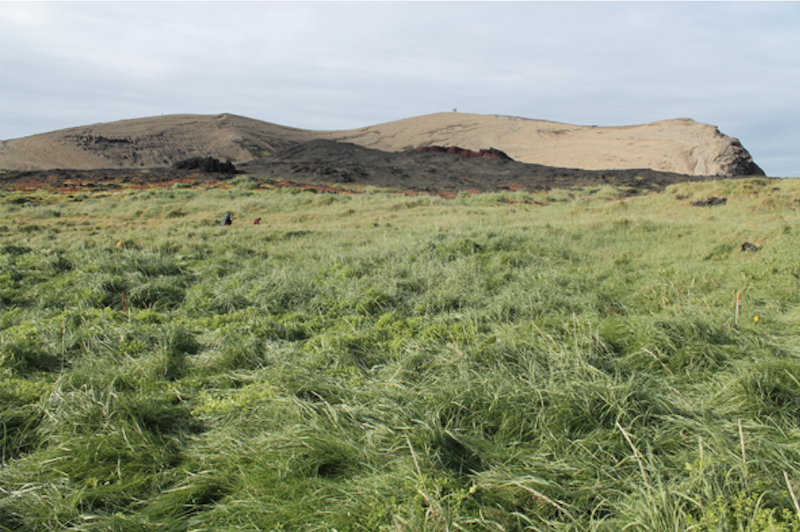
A new island is born
On November 14, 1963, a new island emerged from the sea. Surtsey is about 20 miles (32 km) off the southern coast of Iceland. It began as an undersea volcanic eruption that built an island over the course of 3 1/2 years. Today, Surtsey is off-limits to everyone except scientists. That’s because the island has become a natural laboratory for studying the colonization of plants and animals.
The first person to witness the newly-emerged island was a cook aboard a trawler called Ísleifur II. He spotted a column of dark smoke rising from the surface of the sea. The ship’s captain thought it could be a boat on fire and turned his vessel to investigate. What they found was an island in the process of being born.
The new island was later named Surtsey, for Surtr, a fire jötunn (a mythological race of Norse giants).
Surtsey is just one of several notable islands that emerged from the sea in living memory. For example, on September 24, 2013, an earthquake caused the formation of a new mud island off Pakistan’s southern coast. Another famous example from the 20th century is Anak Krakatau (“child of Krakatoa”), which formed in the flooded caldera of that Indonesian volcano in 1930.

Evolution of an eruption
The Surtsey eruption began about 130 meters (426 feet) below sea level. Like Iceland, Surtsey is located on the Mid-Atlantic Ridge, a deep ocean fissure that separates tectonic plates. In the months following Surtsey’s emergence, the explosions were violent. Hot magma interacting with ocean water catapulted rocks as far as a kilometer (0.6 miles) away. Clouds of ash and steam climbed as high as 9 kilometers (5.6 miles). By early 1964, the island was built up enough that water could not reach vents, and volcanic activity calmed. Lava flows created a harder substrate over loose volcanic deposits, stabilizing the island. By June 1967, eruptions had ceased and Surtsey has since remained dormant.
When volcanic eruptions ended in June 1967, the island’s area was 2.6 square kilometers (1.0 square miles). Its highest peak was around 170 meters (558 feet) above sea level. Since then, erosion has been nibbling away at the island. As of 2012, its surface area was reduced by 50%, to 1.4 square kilometers (0.5 square miles). In 2007, measurements of its highest elevation showed a decrease to 155 meters (509 feet). The island is also subsiding as loose volcanic material gradually compacts, and the underlying lithosphere sags under the volcano’s weight.
Life finds a way on Surtsey
The birth of this new landform wasn’t the end of Surtsey’s story.
The government of Iceland declared Surtsey a nature reserve in 1965. Its purpose? To study how plants, insects, birds, seals, and other forms of life establish themselves on the island over time. In 2008, UNESCO declared Surtsey a World Heritage Site.
Within a few years of Surtsey’s formation, plants were sparsely scattered on beaches. Initially, seeds had been mostly brought in by wind dispersal and ocean currents. But as birds started frequenting the island, they increasingly became the main means of seed dispersal.
Seabirds were poised to play a major role in transforming Surtsey. Fulmars and guillemots had begun nesting on the island as early as 1970. Gulls eventually established a sizable presence and emerged as major influencers in the island’s flora. As of 2009, at least 15 bird species were known to breed on Surtsey.
And then the plants came
Starting in the mid-70s, plants started appearing farther inland as accumulated bird droppings in nesting colonies built up fertile substrates. By the mid-80s, vegetation was becoming much more abundant, thanks to the seabird breeding colonies. Lush grassy meadows dominated in nesting sites. Elsewhere, different plant communities were sparsely scattered on beaches and other locations on the island. In 1986, 15 plant species were recorded but by 2008, that number had climbed to 69.
Other life has also gained a foothold on this young island. Mosses and lichen made an appearance within a few years after volcanic eruptions ceased. Insects were an early presence on the island, blown in by the wind or washed ashore on debris.
Gray and harbor seals now breed on Surtsey. Their presence has drawn orcas, their main predators, to the waters surrounding the island. Below the waves, marine life is thriving, with algae-covered rocks in the shallows and invertebrates like starfish and limpets.
Recent images of Surtsey




Bottom line: Surtsey first emerged above the waves on November 14, 1963, off the coast of Iceland. After 3 1/2 years of eruption, it became dormant. Since then, scientists have been observing the natural succession of plants on this young island, and its colonization by animals.











